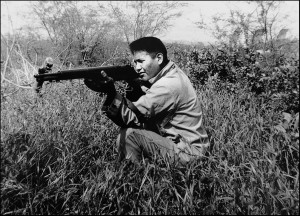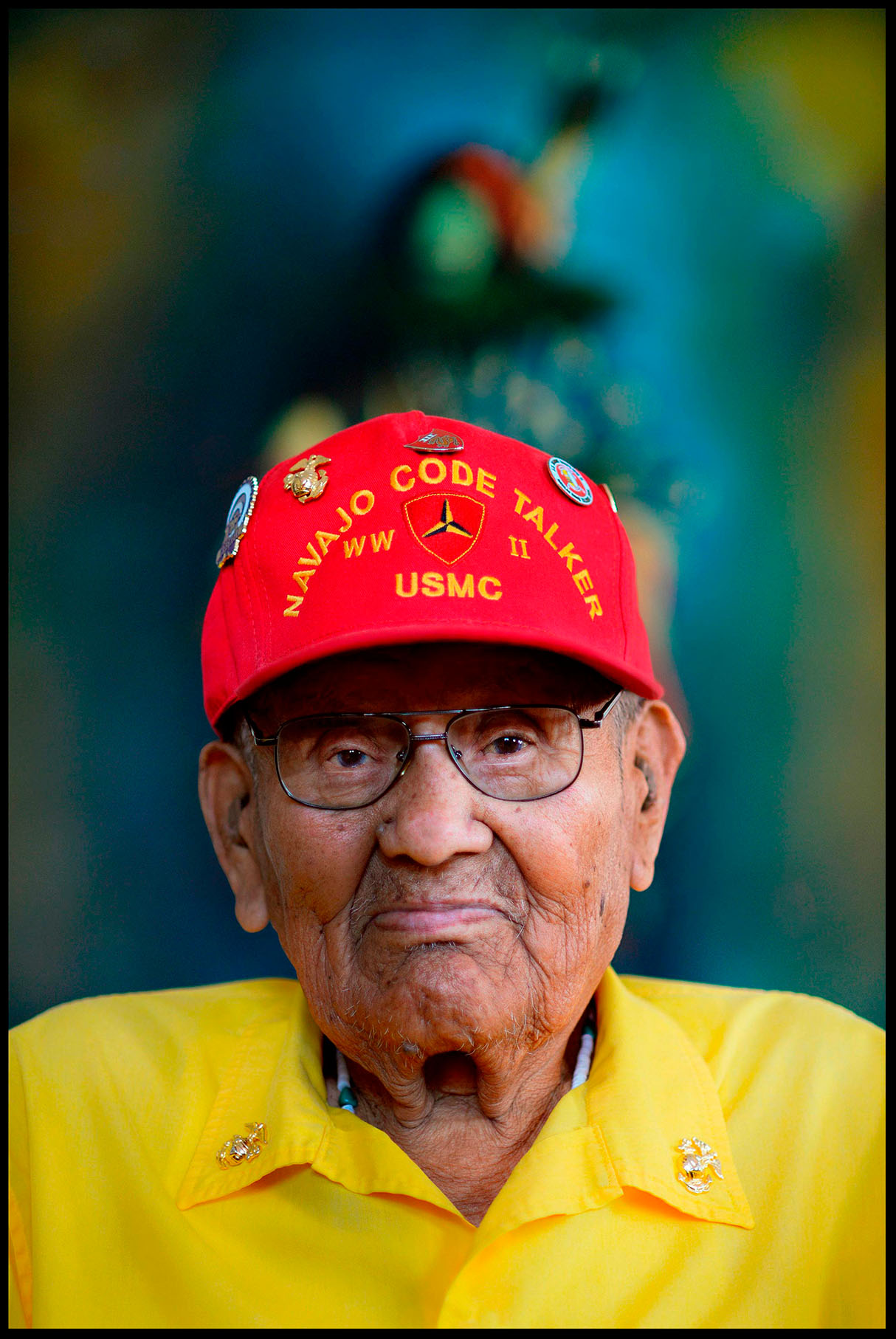Chester Nez
Navajo Code Talker
Chester Nez
Corporal, USMC
1941–1945

Pvt. Chester Nez,
Camp Pendleton, CA, 1943
I’m no hero. I just wanted to serve my country.
I was a Navajo “Code Talker”, the last survivor of the original 29 Navajo Marines who developed the code that stymied Japanese forces and helped the U.S. win WWII in the Pacific.
I was born in 1921 in Chi Chil Tah, New Mexico, known as Two Wells in English. My mother died when I was very young. When I was eight, I was sent to the first of a series of Bureau of Indian Affairs boarding schools where I was punished for speaking my native language. In 1942, a Marine Corps recruiter visited and was looking for guys who were bilingual in English and Navajo. I enlisted in May.
The luckiest day of my life was being chosen as one of the original Code Talkers—I was a Marine! I felt like I was walking in a dream. After boot camp, we were assigned to Camp Elliott, California to create a code for secure voice communications. It took 13 weeks. We developed a two-layer code system. As an example, a dive bomber would be Gini in Navajo and translate to Chicken Hawk. The Navajo language was chosen because its syntax and tonal qualities were nearly impossible for a non-Navajo to learn. The Japanese tried everything to break the code, but they never did. They also tried to capture us. We had four guards to take care of us in combat.
Our mission was so important that we didn’t get leave for three years, and so secret we couldn’t talk about it until 23 years after the war ended. We were given little respite, often working 35 hours straight without food or rest, hunkered down in foxholes or dodging bullets. I served in many campaigns: Guadalcanal, Bougainville, Peleliu, Angaur and Guam.
The most terrifying day of my life was November 4, 1942 when we landed on Guadalcanal. There, skeptical officers ran a test for sending coded messages, one using the Shackle method—an encoding machine that was cumbersome and subject to errors. It took over four hours to send and decode a message. We sent the same message in less than three minutes. The first message I sent over the radio while serving at Guadalcanal was, ‘Enemy machine gun nest on your right. Destroy.’ It was destroyed right away. I was on Peleliu a couple of months. I think I was scared 24 hours a day. On Angaur, I almost got shot by a couple of Army guys who thought we were Japanese. They took us prisoner until they found out we were Code Talkers.
I was extremely proud to serve as a Marine and very proud that my language—which we had been forbidden to speak the entire time I attended boarding school—ended up being one of the main reasons we won the war in the Pacific.
After my discharge, I studied art at the University of Kansas. When I first came home, I had terrible dreams. It was so bad I couldn’t sleep. I told these dreams to my dad and he got a medicine man to perform a healing ceremony. Things eased down and eventually the nightmares went away.
Once again, during the Korean Conflict, I was called into the Marine Corps, where I was stationed in Hawaii and Idaho. After the war, I got married, started a family, and began a career as a painter/muralist at the VA hospital in Albuquerque, New Mexico.
In 2001, I and the 28 other creators of the code were awarded the Congressional Gold Medal, most posthumously, by President George W. Bush. With my friend Judith Schiess Avila, I wrote Code Talker: The First and Only Memoir by One of the Original Navajo Code Talkers of WWII.
What does Mouse Turkey Sheep Uncle Ram Ice Bear Ant Cat Horse Intestines mean? ‘The American flag was flying over Mount Suribachi’ in Navajo Code Talk. {04-16-2013 • Albuquerque, NM}
